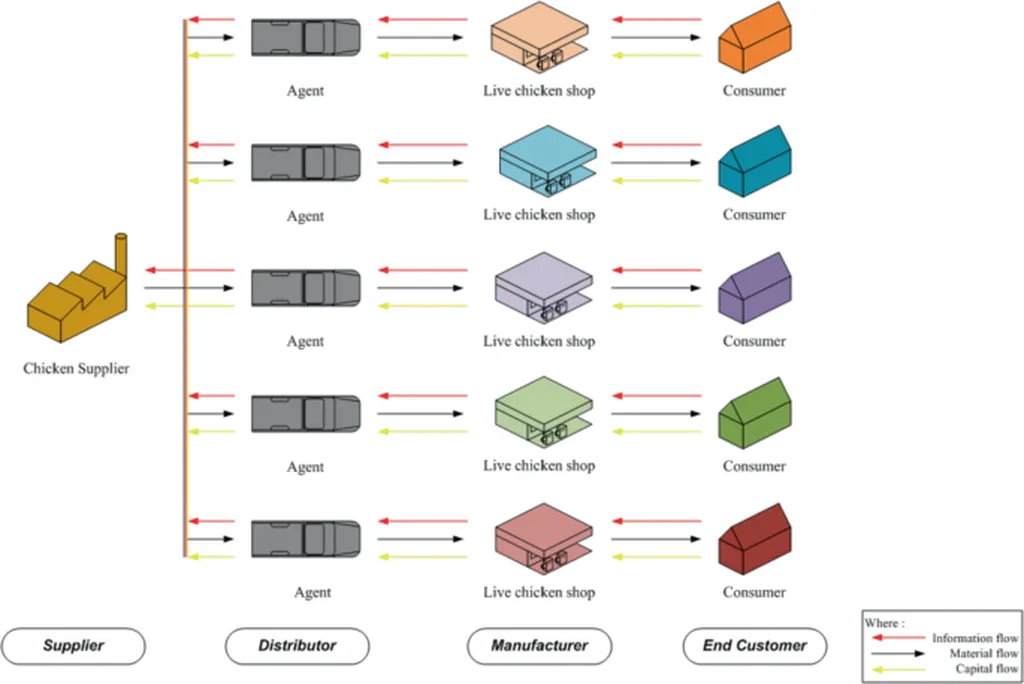In the heart of Indonesia’s bustling food industry, a critical study has emerged, shedding light on the intricate risks associated with halal meat production, particularly in medium-scale chicken slaughterhouses. The research, published in *Advances in Food Science, Sustainable Agriculture, and Agroindustrial Engineering*, identifies and evaluates Halal Risk Points (HRPs) using the Failure Mode and Effects Analysis (FMEA) method. This approach assesses three key parameters—Severity, Occurrence, and Detection—to calculate the Risk Priority Number (RPN) of each potential risk in the halal production chain.
The study, led by Khafizh Rosyidi from Universitas Yudharta Pasuruan, focused on a medium-scale chicken slaughterhouse in Pasuruan Regency. With chicken meat being a high-risk commodity among consumer food products in Indonesia, where the majority of the population is Muslim, the findings are particularly significant. The research identified 17 risk factors across five main stages of production, from chicken arrival to final packaging.
The slaughtering stage emerged as the most critical, with three HRPs categorized as high extreme risk. These included the slaughterer not being halal certified (RPN = 350), the cutting point not being correct (RPN = 378), and the chicken not being completely dead after slaughter (RPN = 420). These risks are directly related to violations of Sharia principles and require immediate mitigation actions.
“These findings underscore the importance of adhering to halal standards not just for religious compliance but also for maintaining consumer trust and market competitiveness,” Rosyidi noted. The study highlights that other moderate to low risks were found in hot water soaking, offal removal, and product labeling stages.
The commercial implications of this research are profound. For the agriculture sector, ensuring halal compliance is not just about meeting religious requirements but also about tapping into a vast market that values halal certification. By systematically identifying and mitigating risks, slaughterhouses can enhance their operational efficiency and market reach.
The FMEA method proved effective in systematically identifying halal risks in chicken slaughterhouse operations. The findings provide a strong basis for implementing risk mitigation strategies, such as standardization of procedures, labor certification, and the utilization of monitoring technology to strengthen halal assurance and regulatory compliance.
As the global demand for halal products continues to grow, this research offers a roadmap for the agriculture sector to navigate the complexities of halal meat production. By addressing these risks head-on, companies can ensure they meet the highest standards of quality and religious compliance, ultimately benefiting both their bottom line and consumer trust.
The study’s findings are a call to action for the industry to prioritize halal risk management, ensuring that every step of the production process aligns with Sharia principles. This proactive approach can lead to a more robust and trustworthy halal meat supply chain, benefiting producers, consumers, and the broader economy.

